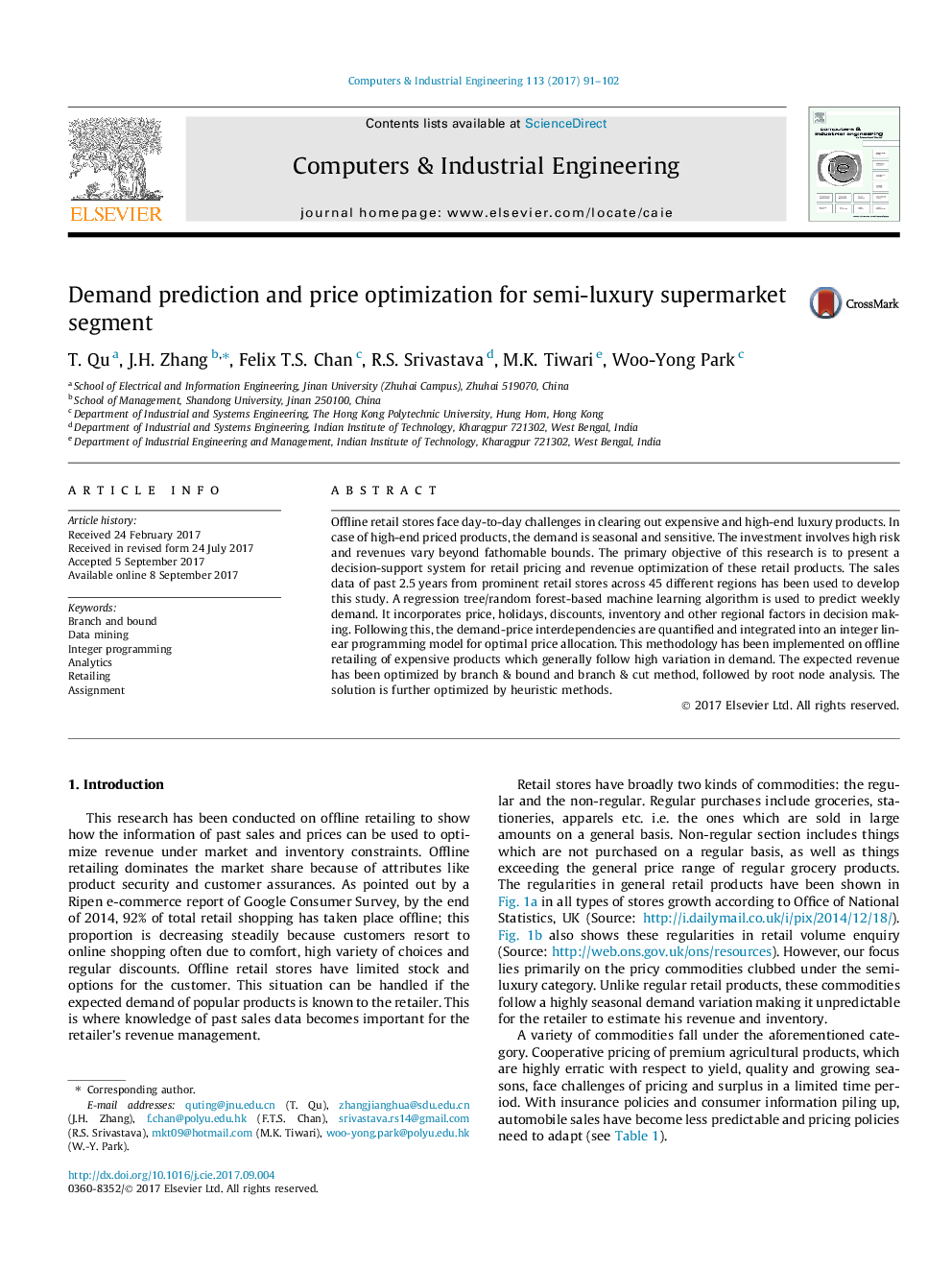| Article ID | Journal | Published Year | Pages | File Type |
|---|---|---|---|---|
| 5127423 | Computers & Industrial Engineering | 2017 | 12 Pages |
â¢A twofold approach to formulate pricing policy for semi-luxury supermarket commodities.â¢The pricing decision relies on tree-based demand prediction model.â¢Price-demand interdependency has been incorporated in the optimization problem using competing styles.â¢Formulation is solved by recursive branch-and-bound based heuristics.
Offline retail stores face day-to-day challenges in clearing out expensive and high-end luxury products. In case of high-end priced products, the demand is seasonal and sensitive. The investment involves high risk and revenues vary beyond fathomable bounds. The primary objective of this research is to present a decision-support system for retail pricing and revenue optimization of these retail products. The sales data of past 2.5Â years from prominent retail stores across 45 different regions has been used to develop this study. A regression tree/random forest-based machine learning algorithm is used to predict weekly demand. It incorporates price, holidays, discounts, inventory and other regional factors in decision making. Following this, the demand-price interdependencies are quantified and integrated into an integer linear programming model for optimal price allocation. This methodology has been implemented on offline retailing of expensive products which generally follow high variation in demand. The expected revenue has been optimized by branch & bound and branch & cut method, followed by root node analysis. The solution is further optimized by heuristic methods.
